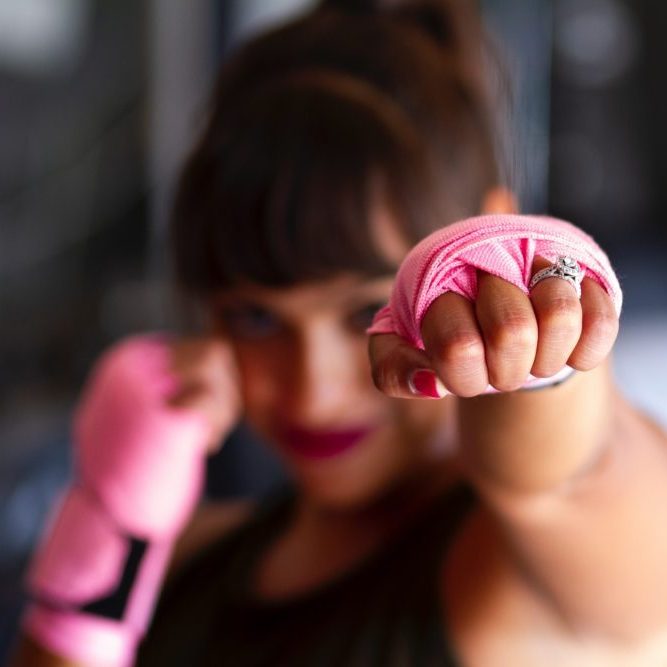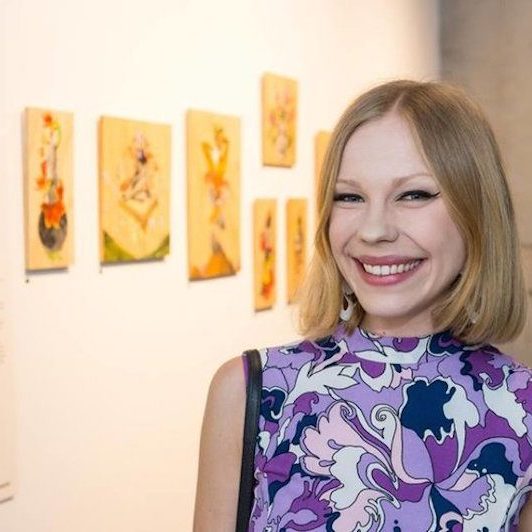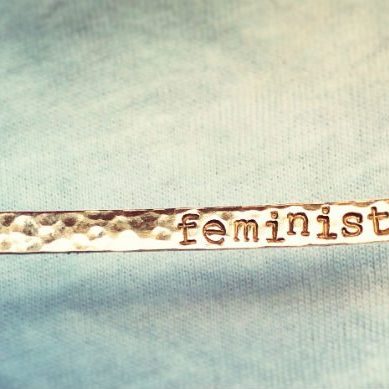We explore the modern day Goddess community that is breathing queer theory and feminist solidarity into an age-old tradition.
A recent New Yorker article by Marissa Meltzer, entitled “Teaching Girls To be Goddesses,” begins with a round up of contemporary representations of goddesses in popular culture (Beyoncé’s maternity photos; the Amazon Prime TV show, “American Gods”; Wonder Woman, etc.). It then blithely proclaims, “Goddesses seem to be in season.”
Meltzer is not wrong. Goddess worship, and perhaps more specifically, the reclamation of a certain stylized Goddess aesthetic – as in Beyoncé’s Boticellian Venus photo-shoots, and Bilquis’ opulent body jewelry in “American Gods” – has certainly seen a rise in popularity in the wake of Hillary Clinton’s defeat, and throughout the Presidency of Donald “grab ‘em by the pussy” Trump.
However, to say that Goddesses are “in season” is to suggest that they have previously been out of season. While Goddesses and the feminine power that they entail are now enjoying a popular culture renaissance, belief in Goddesses, and the existence of goddess-worship practitioners, has long been afoot.
Those who have worshipped the Goddess for a long time already knew this. Many other non-Goddess worshippers knew this too. But many did not, or had forgotten. While the most vocal post-Trump feminist rallying-cry has been to “Resist!”, the questions remains, “How do we resist if the system itself is compromised?”
While practical actions, like better education for women globally, more gender quotas in every industry, and an inversion of the burden of proof in sexual assault cases, are definitely necessary, a broader reconceptualization of how gender operates is also needed.
Gaga Feminism
In 2012, feminist theorist J. Jack Halberstam wrote Gaga Feminism, and laid bare the facts: while a whirlwind of technological and economic change over the past fifty years has managed to dismantle most cultural traditions, traditional gender roles have succeeded in weathering the storm.
Halberstam concluded, “When it comes to gender norms, and sexual norms, religion really is the root of all evil, and that cuts across many religions… religion is a no-no and God has got to go-go.”
If Australia’s 2016 census results are anything to go by, it appears that we are already aligning ourselves with Halberstam’s way of thinking. 30% of census participants who chose to answer the question pertaining to religious belief indicated that they identified as having “no religion,” but “possibly having other spiritual beliefs.” While more specific statistics about which particular spiritualities are gaining popularity are hard to come by, representation in popular culture is usually a good bet. Judging from this approach, it seems that Goddesses are not just in season: they are being consumed in high quantities.
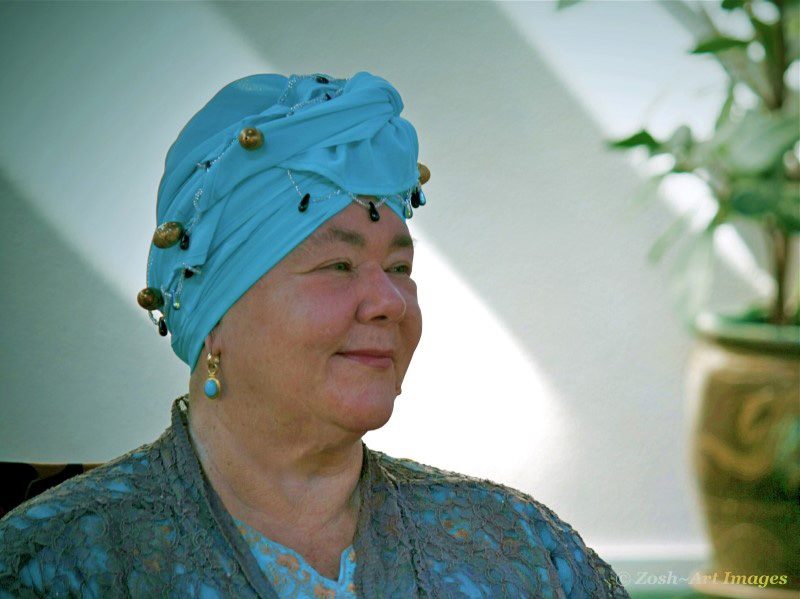
Australian High Priestess of the Global Goddess
Australian High Priestess of the Global Goddess, Anique Radiant Heart, explains to LOTL that belief in the Goddess has long been erased from archeological findings and history books: “As people living in a patriarchal culture that privileges notions of masculinity, male dominance, and a supreme male deity, we have been taught to ignore Goddesses and Priestesses alike so they remain foreign to many of us…. I believe not only to our detriment as women but also to the world.”
With a little digging by feminist historians, it has become clear that Goddess worship has extended throughout the millennia, from the Greeks, to the Romans, to the Sami of Scandinavia, to the Shintoists of Japan. In the 1970s and 80s, goddess worship found another home in second-wave radical feminist ideology. While elements of this initial reclamation mostly adhered to the separatist feminist trope of disavowing everything to do with masculinity, a more postmodern, queer iteration began to take flight in the mid-1990s. This movement, spearheaded by the likes of Patricia Monaghan, was concerned with celebrating not only the earthly iterations of the Goddess, but her celestial characteristics too.
In her 1994 book, O Mother Sun! A New View of the Cosmic Feminine, Monaghan wrote of the spiritual binaries that have serviced the normalization of patriarchy: “The alleged inferiority of women is mythically based in our presumed connection to that realm of world, flesh and devil, while men’s alleged superiority is based on their freedom from such a connection.” While the male god is the sun, who radiates his own light and turns his own, autonomous orbit, the female goddess is the moon, who reflects her light from the sun, and is bound to circumnavigate the earth, which is in turn bound back to the sun.
In imagining what a new understanding of the sun goddess might entail, Monaghan articulated a binary-breaking vision of queer fluidity, which would much later surface in the academic works of theorists like Jose Munoz (the parallels are blatantly clear in Munoz’s 2009 book, Cruising Utopia).
Monaghan wrote, “The sun goddess is not an Apollo in skirts. Rather, she joins realms… we must not separate or dichotomize the world anymore. Night and day, death and life, black and white – these are not opposites, any more than the sun and the moon, or men and women.”
In Australia today, as throughout the rest of the world, the Priestess community is thriving. Priestesses, explains Anique, are women from all professions, backgrounds, races and sexualities, who have answered the call to “do the work of the Goddess in the world.”
A Priestess embodies traditionally feminine and masculine attributes, and in so doing de-genders them. She is a “revolutionary force of kindness and compassion and strength and fortitude, who practices self-love as a devotion to the Goddess.”
Explains Anique, “In the Goddess tradition, we see Goddess as the whole Cosmos, which includes the Earth, Her Sister the Moon and Her Grandmother the Sun. We feel that the Goddess answers our prayers through Her Nature, the Land, the Earth. For example, I am a singer, and that is my Goddess given gift, communicated with me through the birds.”
This eco-feminist, inextricable connection with nature is strikingly similar to the central tenets of Indigenous Australian spirituality. “In sharing time and space with my Aboriginal sisters, we find much commonality in our ways. The primary difference is that in Aboriginal Lore, there are no Goddesses. But there are many female Creator Beings.”
Anique goes on to list more connections between Goddess-worship and Aboriginal tradition: “In the Aboriginal tradition a smoking always happens before any sacred work. In the Goddess tradition, we do what is called a Smoking Clearing, whereby each time we enter ceremony or a sacred building like a Temple. The similarities are endless.”
Anique also has a very personal connection with Indigenous spirituality, as she was once in a relationship with a woman who was half Murri, half Torres Straight Islander. Despite a rocky start to her first meeting with her new partner’s family, Anique recalls how it was singing, and the actualization of masculine/feminine synchronicity in song, that really brought she and the family into accord.
“At one point, one of the brothers started to sing “Paper Roses,” an old country and western chestnut I had sung at clubs for years. At the chorus, I automatically sang the harmony. It sounded beautiful, the male voice with the sweet female voice over it… it was pure beauty. Aunty was in tears – it was her favourite song.”
After many more connections with her partner’s Aboriginal family and community, and noticing synchronicities between her beliefs and theirs, Anique wondered how Aboriginal women and non-Aboriginal women might be brought together in Goddess.
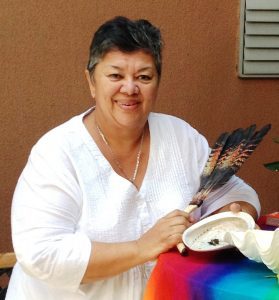
Thirty years later, Anique was attending a Goddess Spirit Rising, a bi-annual conference she runs in Los Angeles, when she met Bilawara Lee. Bilawara shared Anique’s dream, and invited Anique to work with her on a Goddess conference in Australia.
Bilawara’s justification for working with Anique is thus: “I want to bring about a very important healing to the Goddess community here in Australia and to nurture women and girls – both Aboriginal and non-Aboriginal – to come together and have a life changing experience in the Devine Feminine.”
The conference, which will take place from October 20 – 22 2017, at the Baden-Powell Centre adjoining Lane Cove National Park in Sydney, will host various speakers and performers, celebrating the many paths to the Divine Feminine.
Anique explains that today, “women are worshipping the Goddess in many iterations. Here in Australia, there are many powerful Ancestor and Creator Beings who are Feminine. The Supreme Feminine Creator being of this Land is the Rainbow Serpent.”
Goddess worship eschews the exclusionary, hierarchical tactics and ideologies of patriarchal, androcentric religions and belief systems, and, says Anique, “is about celebrating our glorious diversity. There are numerous ways a woman can find the Goddess.”
Of course, a gynocentric belief system is not going to be palatable to many – most obviously, to those who benefit from the power imbalance of patriarchy. This is an unfortunate truth that Anique readily acknowledges, exclaiming, “Oh yes! For many, the mere fact that the leaders are women will result in complete dismissal.”
She also explains that a lot of peoples’ initial dismissal of Goddess worship goes back to its historical link to the phases of the moon. “But in reality,” she says, “the fact is that our bodies are over 90% water, and the Moon is scientifically known to affect the tides. So it seems only natural that our bodies will respond to the Moon. As women, our blood rhythms and cycles are tuned to the Moon. That connection seems to attract much scorn and hatred.”
It seems prescient here to consider that spiritual systems that worship the sun and/or connect their deity to the sun receive no scorn for doing so. For example, Psalm 113:3 in the Bible says that Lord is to be praised “From the rising of the sun to its setting,” and explicitly demeans the power of the moon in Genesis: “God made the two great lights, the greater light to govern the day, and the lesser light to govern the night.”
The fact is that a lot of Goddess worshippers are lesbians, because, explains Anique, “Most lesbians question the status quo. It is impossible not to, when one is marginalised. And the most glaring aspect of the status quo we call patriarchy, is the Church. The Godhead. The Supreme Father. Closely followed by the judiciary and then the government and then the corporations. I feel lesbians who are feminists clearly see through the lies of the patriarchy and many are not afraid to say so [as straight women might be]. The logical extension of that understanding is to look for alternatives to the status quo. In terms of Spirituality, when we do look for alternatives…. we find the Goddess.”
Anique concludes our talk with a call to solidarity. “Goddess worship is about acknowledging that we are all One. We must not turn on our Sisters, and we must help our Sisters rid themselves of internalized misogyny. At present, the women’s movement is divided, and that division comes from the competition between women which is inculcated within us from the moment we are born.
Women need to learn to be okay with female leadership. When we threw out structure as a patriarchal construct, and we named hierarchy as the greatest of evils, we may well have thrown out the baby with the bathwater. I feel we will come together as a very powerful force when we learn to deal with female leadership, and co-create a process of leadership that embraces good feminist tenets, and powerful Spiritual frameworks and underpinnings.”

